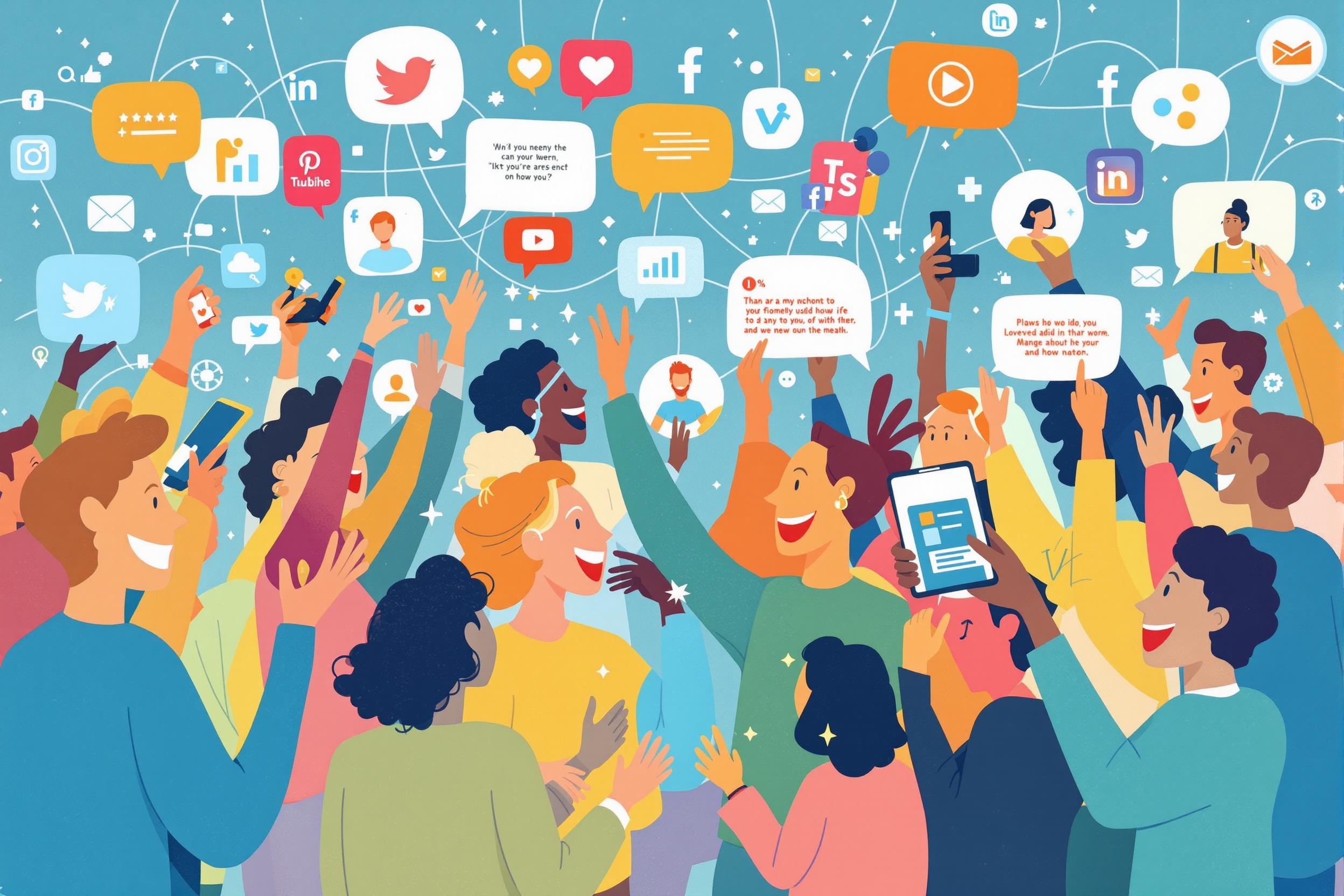Ever thought your employees might be your best marketers? No, seriously. Not the ones in the marketing department. I’m talking about every single person in your company. Wild idea? Maybe. Game-changing? Absolutely.
In today’s hyper-connected world, employee advocacy is the secret sauce that can set your company apart in the crowded marketplace of talent. Let’s dive into why turning your employees into brand ambassadors might just outperform your best marketing strategies.
The Untapped Goldmine Sitting in Your Office
Picture this: You spend millions on marketing campaigns, social media ads, and PR efforts to build your employer brand. But have you leveraged the voices of the people who know your company inside out—the employees?
I remember a time when we hired a social media guru to amplify our brand presence. She did a decent job, sure. But when our own employees started sharing their genuine experiences and stories, the engagement levels skyrocketed. Authenticity matters, and who better to showcase it than your own team?
Why Employee Advocacy Works Like Magic
Let’s cut to the chase. People trust people more than brands. According to Nielsen, 92% of consumers trust recommendations from friends and family over advertising. So when your employees share their positive experiences, it resonates more than any ad ever could.
Consider this:
- Expanded Reach: Your employees collectively have a larger network than your company’s social channels.
- Higher Engagement: Content shared by employees receives eight times more engagement than content shared by brand channels.
- Trust Factor: Employees are perceived as more credible than CEOs when it comes to talking about working conditions.
Isn’t that fascinating?
The Social Media Multiplier Effect
In the age of social media, one post can reach thousands, if not millions. When employees share company content or their own positive experiences, it amplifies your brand message exponentially.
Here’s a fun fact: If you have 100 employees and each has an average of 500 connections, that’s a potential reach of 50,000 people every time they share something. Now imagine if they share content regularly. The numbers add up quickly.
Real Stories, Real Impact
Let me tell you about Alex, a developer on one team. He shared a LinkedIn post about how our flexible work policy allowed him to pursue his passion for photography. The post went viral in the industry circles. The company received dozens of inquiries from top talent looking to join us, all because of one heartfelt story.
Authentic stories humanize your brand. People connect with stories, not corporate jargon.
How to Cultivate Employee Advocacy
So, how do you get your employees to become brand ambassadors without forcing them into it? Here are some strategies:
1. Foster a Positive Company Culture
You can’t fake this one. If your work environment is toxic, no amount of incentives will make employees advocate for you.
- Transparent Communication: Keep employees in the loop about company goals and challenges.
- Recognition Programs: Celebrate achievements, big or small.
- Growth Opportunities: Invest in employee development.
Happy employees naturally become advocates.
2. Provide Shareable Content
Make it easy for employees to share company updates.
- Create Engaging Content: Stories, videos, infographics—mix it up.
- Employee Spotlights: Feature employees in your content.
- Content Library: Provide a repository of approved content they can share.
3. Encourage Personal Branding
Support employees in building their own personal brand. It might sound counterintuitive, but it benefits everyone.
- Social Media Training: Offer workshops on how to use platforms professionally.
- Highlight Expertise: Encourage them to share their knowledge.
- Acknowledge Their Achievements: Both internally and externally.
4. Implement Employee Advocacy Programs
Formalize it.
- Advocacy Platforms: Tools like Hootsuite Amplify or Bambu can streamline sharing.
- Incentives: Gamify the process with leaderboards and rewards.
- Guidelines: Provide clear do’s and don’ts to avoid any mishaps.
Potential Pitfalls (and How to Avoid Them)
Not everything is sunshine and rainbows. There are some challenges.
- Overload: Bombarding employees with too much content to share can backfire.
- Inauthenticity: Forced sharing feels fake and can harm credibility.
- Policy Missteps: Without clear guidelines, employees might share confidential information.
Solution? Keep it voluntary, authentic, and provide clear social media policies.
Measuring the Impact
You might be thinking, “This sounds great, but how do I measure success?”
- Engagement Metrics: Likes, shares, comments on employee posts.
- Traffic Sources: Website visits from social media referrals.
- Talent Acquisition Metrics: Increase in applications and quality of hires.
- Employee Participation Rates: How many are actively sharing content.
Success Stories
Companies like IBM and Dell have robust employee advocacy programs.
- IBM saw a 50% increase in share of voice in the market after launching their program.
- Dell reported that their employees’ social media activity drove more traffic than their corporate channels.
These aren’t just numbers; they’re indicators of a shift in how brands communicate.
The Psychological Factor
People love to be part of something bigger. When employees feel valued and believe in the company’s mission, they’re more inclined to share their experiences.
Think about it: Wouldn’t you proudly share if your company was making a positive impact?
Integrating Advocacy into Your Employer Brand
Your employer brand isn’t just what you project; it’s what others perceive. Employee advocacy bridges the gap.
- Authenticity: Builds trust with potential candidates.
- Differentiation: Sets you apart from competitors.
- Engagement: Attracts talent that aligns with your culture.
The Ripple Effect on Recruitment
Here’s where it gets exciting for talent acquisition folks.
- Reduced Hiring Costs: Employee referrals are cost-effective.
- Better Quality Hires: Candidates sourced through employee networks often perform better.
- Shorter Time-to-Fill: Employee advocacy accelerates the hiring process.
A New Paradigm in Marketing and HR Collaboration
Employee advocacy blurs the lines between marketing and HR. Collaboration is key.
- Unified Strategy: Align goals between departments.
- Shared Resources: Pool budgets and tools for maximum impact.
- Consistent Messaging: Ensure everyone is on the same page.
Addressing Skepticism
“But won’t employees just slack off on social media?” It’s a common concern.
- Trust: Empowering employees shows you trust them.
- Guidelines: Set expectations clearly.
- Monitoring: Use tools to ensure compliance without micromanaging.
Most employees will rise to the occasion when given responsibility.
Looking Ahead: The Future of Employee Advocacy
As remote work becomes the norm, digital communication is more critical than ever.
- Virtual Communities: Foster connection among remote employees.
- Digital Storytelling: Leverage new formats like podcasts or live streams.
- Global Reach: Employees can advocate from anywhere, expanding your global footprint.
Final Thoughts
Employee advocacy isn’t just a buzzword; it’s a powerful strategy that can transform your company’s brand and talent acquisition efforts.
Imagine a world where your employees are your biggest cheerleaders, where authentic stories attract top talent effortlessly, and where the lines between marketing and HR blur to create a cohesive, compelling narrative.
It’s not a fantasy. It’s attainable, and it starts with you.
Ready to harness the power of employee advocacy? Machine Hiring offers tools to help you integrate employee advocacy into your recruitment strategy seamlessly. Their platform can amplify your employees’ voices, measure impact, and attract top talent like never before. Why not give it a try?


